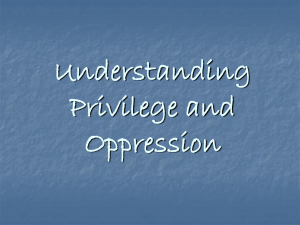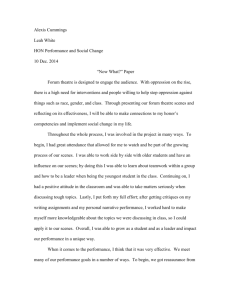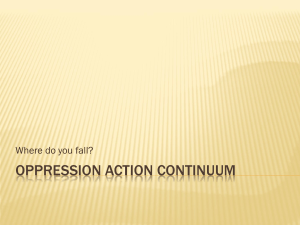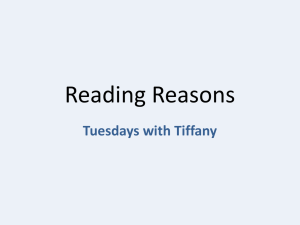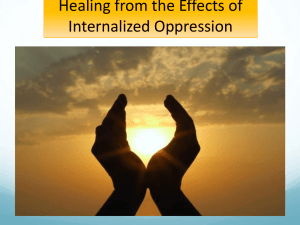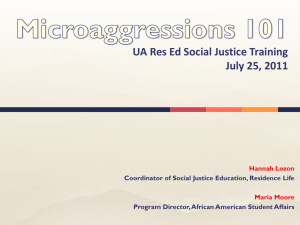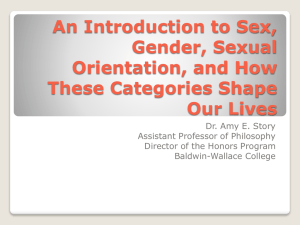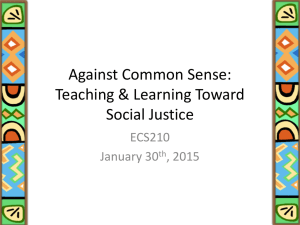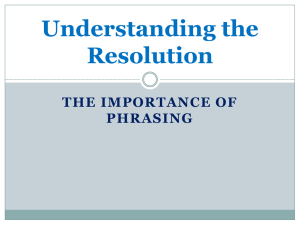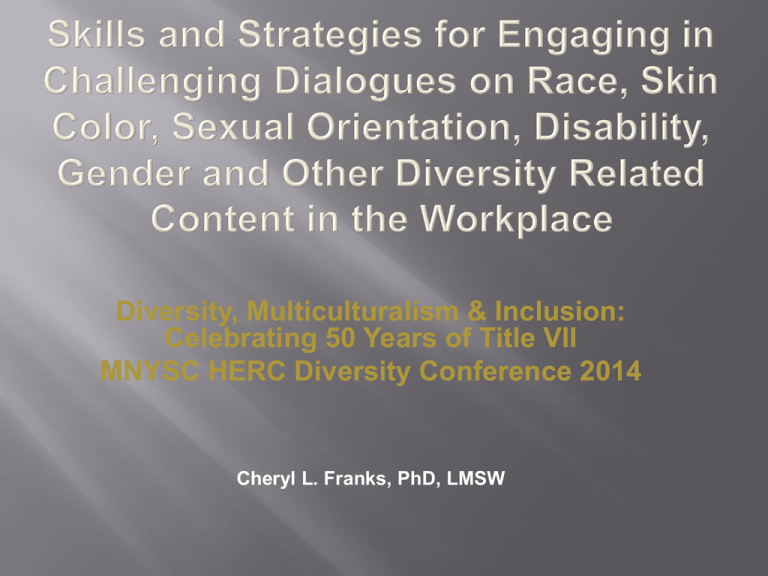
Diversity, Multiculturalism & Inclusion:
Celebrating 50 Years of Title VII
MNYSC HERC Diversity Conference 2014
Cheryl L. Franks, PhD, LMSW
How is this Work Represented in Your School’s
Vision or Mission Statement?
How is this Work Represented by your School’s
Leadership?
This is not “diversity light”!!
It’s more reflected in Chase’s lens on diversity…
“Diversity, generally understood and embraced, is not casual
liberal tolerance of anything and everything not yourself. It is not
polite accommodation instead, diversity is, in action, the
sometimes painful awareness that other people, other races, other
voices, other habits of mind, have as much integrity of being, as
much claim on the world as you do...We are meant to be here
together.”
-William M. Chase, The Language of Action
How to we reach this level of diversity in our organizations? How do we
create a climate of inclusion , connection and respect for differences?
Recruit and retain toward a multicultural organization? Build effective,
productive and collaborative cross-cultural teams?
We can’t if we’re unable to talk about issues of race, skin-color, sexual
orientation…in mixed company
And that’s often the case!
Folks I work with say they move away from these conversations…when
asked why, they say they just don’t know how—some talk about fear and
discomfort
How do we do engaging in these conversations in our everyday
professional interactions?
Nothing has prepared us to have these conversations in mixed
company
We shouldn’t expect that we know how
If we do we don’t honor the body of knowledge and skill involved
Would you trust an untrained surgeon?
It does take a body of knowledge and skill
By the end of our time together today you will have increased your
capacity to have these conversations even if just a little.
Dimensions of Identity and Difference
Race
Skin color
Ethnicity
Nationhood
Disability/ability
Age
Gender
Sex
Religion/spirituality
Sexual orientation
Language
Geographic location
Beyond Diversity, Cultural Competence,
Multiculturalism
Not Holding Hands and Singing We are the World
Issues of Power and Privilege
A Historical and Structural Analysis
Oppression
Dominance
Essential for the Development of Authentic
Cross-Cultural Relationships in the Workplace
Engaging in Challenging Dialogues in
Supervision and Team/Staff Meetings
Across Any of These Dimensions
Without Which There is no Authenticity
Critical Consciousness
Promoting critical consciousness means we
need to pass through 3 levels of awareness
Self, Social and Global-Awareness
Centers on a critical exploration of ourselves as cultural
beings and toward achieving an aware and positive cultural
identity.
Encourages us to explore issues of race, disability, ethnicity,
skin color, class, gender, age, religion/spirituality,
nationhood, sexual orientation, language, sex assigned at
birth and geographic location (not an exhaustive list).
Full awareness is facilitated by not merely celebrating these
dimensions of identity but through an analysis which
includes and embraces issues of power, privilege,
oppression and dominance and their impact on us as well as
on those we serve.
Key to self-awareness is an understanding of how
identity is closely tied to privilege, oppression and
dominance through the use and/or misuse of power.
Once we see the connection between identity and
power relationships, we develop a healthy selfawareness that recognizes how oppression and
privilege mark our own struggles and the struggle of
others.
Enables us to think critically and reflectively about social issues,
needs and capabilities in our communities and the communities of
those we serve.
It is both a knowledge base and set of cognitive skills that promote
an analysis and problem solving on social conditions.
Extends the power analysis which begins in self-awareness to an
understanding of how groups and institutions sustain or
ameliorate inequalities at the community level.
It is through social awareness that we fully come to understand
the roots of oppression, dominance and inequality both locally
and globally.
Global Awareness
•
•
•
•
Then allows us to transfer this knowledge,
skill set and consciousness to empathizing
with the struggles of oppressed people
throughout the world.
It embraces the intellectual understanding
of the many universal forms of oppression
from a historical, structural and systemic
framework, while reaching for the actions
and behaviors that demonstrate
connectedness with others, empathy with
suffering, and resistance to oppression.
When we have reached a level of global
awareness we often view the world as a
place of possibilities and change.
Most important, in our daily actions we
consistently and in micro and macro ways
work toward creating a better world.
Barack Obama’s Speech on Race
Holding Both
Leaping Over Dominance
Not the Other Side of the Coin
Nothing Has Prepared Us
The Piece of Furniture in the Middle of the Room
Moving Closer, Moving Away
Authenticity
Building Capacity
Micro-aggressions/insults, macro-aggressions, micro-trauma
Racial and sexual orientation identity theory
Power and privilege; white privilege
Within groups issues
Help vs. Support (Capacity Building) Impact/Intent (Conflict Resolution)
Dominant/non-dominant statuses
Double Consciousness
Systems of Dominance and Oppression: Are we part of the problem or
part of the solution
Goals vs. Methods
Not instantaneous
Cumulative
Non-linear
Tolerance for ambiguity and complexity
If the goals are clear but the methods aren’t, people get confused
and think the goals aren’t clear
Life-long and over time
New and different paradigms, worldviews: both/and vs. either/or
Serious, not Solemn, Fun!!
It’s about Structure
“If the structure does not permit
dialogue, the structure must be
changed”
Paulo Freire
increased our capacity (even if just a little) to tolerate the
ambiguity, complexity and discomfort ESSENTIAL for
engaging in challenging dialogues in our workplace
enhanced our understanding (even if just a little) of
structural issues of dominance, oppression, power,
privilege and discrimination, and the important role they
play in these conversations
increased our capacity to dialogue with each other,
support each other on these challenging
conversations…nothing has prepared us, it is a body of
knowledge and skill
Through cross-cultural dialogue we confront the reality
of cultural difference, rather than subsuming it under
dubious claims to universality.
-Kristin Louise Savell in Crooms
A key element of dialogical praxis (drawing from
Freire) is “conscientisation,” which can be described as
the raising of consciousness through dialogue linking
the personal and the political, in such a way that it
opens up possibilities for action as people become
more aware of the structures and the discourses that
define and perpetuate oppression.
-Jim Ife
We have run away from race for far too long.
We are so afraid of inflaming the wound that
we fail to deal with what remains America’s
central social problem. We will never achieve
racial healing if we do not confront each other,
take risks, make ourselves vulnerable, put
pride aside, say all the things we are not
supposed to say in mixed company—in short,
put on the table all of our fears, trepidations,
wishes, and hopes.
-Harlon L. Dalton
sustained commitment, concerted effort, and the
attention of us all…
-Lee Bollinger
Bearing witness to each other’s
narratives and experiences...
Words vary with time, location and the
individual so it’s important to respectively ask
the person how they identify
So, this work is about increasing our capacity
for understanding and increasing our courage
to ask…
I was in the doctor’s office last week and they
asked me to fill out a form
The form asked for Gender: Male____Female____
It’s so much more complicated than that…
But we have to increase our capacity to hold that
complexity
Transgender
Cisgender
Gender ambiguous
Gender non-conforming
Gender variant
Gender queer
Androgynous
Two-Spirited
…and it’s not an exhaustive list
The related oppression is “genderism”
Male
Female
Transexual
Intersex
Two-spirited
…and it’s not an exhaustive list
The related oppression is “sexism”
How might the gender or sex of your
colleague, co-worker, supervisee , manager
impact your ability to develop authentic crosscultural relationships in your professional role?
How might your gender or sex impact your
ability to develop authentic cross-cultural
relationships in your professional role ?
White or European American
People of Color
o Asian
o Asian American
o Latino/a/Hispanic/Chicano/a
o Black/African American
o East Asian
o South Asian
o Native American
Biracial
• Multiracial
• …and it’s not an exhaustive list
The related oppression is “racism
How might your race impact your ability to
develop authentic cross-cultural relationships
in your professional role ?
Tasks of the Privileged
To resist false notions of equality. Not helpful equating suffering
Intentions vs. consequences
To challenge the ahistorical approach. The privileged cannot
understand the subjugated out of context
To develop thick skin
To not become a FOE—framer of others’ experiences
Tasks of the Subjugated
To overcome learned voicelessness; to advocate for oneself
To learn to exhale the negative messages that have become
internalized
To overcome the addiction to protect, educate or change the
privileged
To deal with one’s own rage, to channel it appropriately, not to
eradicate it
To be the expert in your own experience, not of
others
To create space for the telling of one’s story
To make space for both thoughts and feelings
Straight
Heterosexual
Gay
Lesbian
Bi-Sexual
Pansexual
Asexual
Homosexual
Queer
Questioning
Two-spirited
…and it’s not an exhaustive list
The related oppression is “heterosexism”
How might your sexual orientation impact
your ability to develop authentic cross-cultural
relationships in your professional role ?
Christian
Catholic
Muslim
Buddhist
Hindu
Jewish
Protestant
Theist
Sikh
Wiccan
Atheist
Pagan
Agnostic
No religion
• …and it’s not an exhaustive list
The related oppression is “religionism”
How might your religion impact your ability to
develop authentic cross-cultural relationships
with your patients in your role as their nurse?
•
Identification with place of birth
•
Born outside the US
•
•
Born within the US, but not the New York City
area
Born within the New York City area

